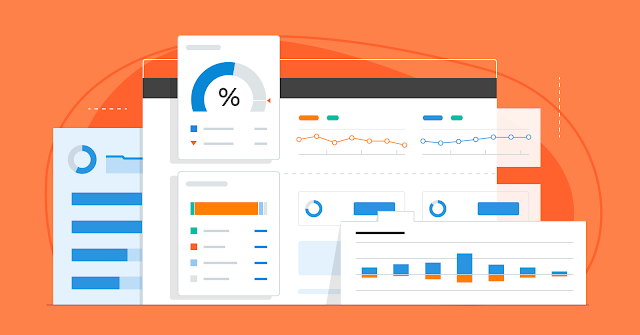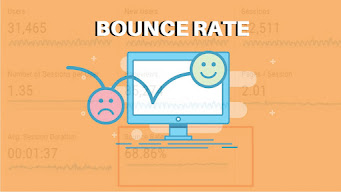Exploring the possibilities of SEMrush
Online visibility is very important in the digital marketing and business worlds. Online visibility is defined as the “overall presence of a business or brand on the Internet” (Big Commerce, n.d.). If a business isn’t present online, then it will be difficult for potential customers to find its website and complete the desired actions, such as purchasing a product or service. Online visibility also helps with brand reputation and standing out from the competition (Big Commerce, n.d.). Ultimately, a lack of online visibility can hurt a business’ ability to gain new customers and make money (Big Commerce, n.d.; SEMrush, 2021-i).
A business can gain online visibility through strategies such as digital marketing campaigns, search engine optimization (SEO), pay per click (PPC), public relations (PR), social media marketing (SMM), blogging, and outreach (SEMrush, 2021-i).
SEMrush is one of many powerful tools that allows users to gain marketing insights that will help improve their brand or business’ online visibility (SEMrush, 2021-i). SEMrush has six main categories: SEO, local SEO, advertising, social media, content marketing, and competitive research (SEMrush, n.d.-b). Analyzing the data in these categories can help businesses gain insights about their online presence and figure out ways to increase visibility in these areas.
SEMrush offers three subscription levels: Pro, guru, and business (SEMrush, 2021). Each level includes different features and tools for various needs. The pro plan is available for $119.95 per month. The guru plan is $229.95 per month, while the business plan is $449.95 per month (SEMrush, 2021-f)
One of the main focuses of this platform is SEO. SEO is defined as “the practice of increasing the quantity and quality of traffic to your website through organic search engine results (Moz, n.d.-b). It’s important to understand what SEO is before we dive deeper into the data, information, and capabilities of SEMrush.
On the surface, one of the biggest lessons I learned is how much information there really is to analyze. Leveraging this data and gaining insights from it can help to set a business up for success.
I decided to explore SEMrush using Target.com since it’s one of my favorite stores. I used the domain overview to get a general understanding of how people were getting to the website, what they were searching for, and how Target compares to some of its competitors. In terms of organic search, some of the company’s main competitors include Wayfair, Overstock, Walmart, Kohl’s, and Home Depot. Walmart has more keywords and more organic traffic than Target, while Home Depot has significantly less keywords and more traffic than Target. Some of the most popular keywords that people are searching and that are generating the most website traffic for Target are “target,” “target near me,” “target hours,” target com,” and stores near me” (SEMrush, 2021-c).
(SEMrush, 2021-c)
Another really cool feature of this platform is the ability to create a project. This option can be found on the left side of the screen under the “management” category. A project provides 11 tools to help analyze, share, and track the progress of online visibility, many of which are related to SEO (SEMrush, 2021-c).
Once a user clicks on “projects,” they can enter the root domain of a website that they would like to start tracking. There are limits on the number of projects that can be managed based on the type of subscription a user has. Free subscriptions can only manage 1 account, while pro subscriptions can manage 3 projects. Users with the guru level can manage 15 projects and the business level can manage 25 projects under one account (SEMrush, 2021-e).
The different project tools include (Reed College of Media, 2021; SEMrush, 2021-e; SEMrush, 2021-f; SEMrush, 2021-g; SEMrush, 2021-h):
- Site audit: The site audit shares insight into the health of your website. It helps to identify areas of the website that are strong and areas that need improvement. More specifically, the site audit will identify issues such as duplicate content, duplicate title tags, broken links, and links that are inaccessible.
- Position Tracking: This tool helps to identify keyword opportunities and information about competitors
- On Page SEO Checker: This tool will help to identify ways to improve on page SEO
- Social Media Tracker: This tool allows users to track their competitor’s social media accounts and compare the data, such as engagement and growth, to their own social media accounts. This can be very helpful in better understanding the social media preferences of target audiences.
- Social Media Poster: This is a social media scheduling and planning tool. Users can create and plan content for Facebook Business Pages, LinkedIn, Instagram, Pinterest, and Twitter through the SEMrush platform.
- Brand Monitoring: This tool helps to track mentions on the Internet by identifying how many times the keyword you are tracking has appeared.
- Backlink Audit: This audit identifies any toxic domains that are sending backlinks to a website.
- Link Building Tool: Using this tool, SEMrush identifies domains that could be used as opportunities for link building for your website.
- PPC Keyword Tool: This tool identified keywords and the number of campaigns in your project.
- Organic Traffic Insights: This tool shows data from Google Analytics, SEMrush, and Google Search Console. Some of the data that users can gain through this tool include click-through rate, sessions, volume, organic keywords, and keyword ranking.
- Content Audit: This tool analyzes the content on a business’ website and provides insight about how to improve content.
(SEMrush, 2021-b)
I decided to stick with Target for my project. Since I am completely new to SEO and still getting comfortable with SEMrush, it was a little overwhelming trying to set up some of these project tools and to understand what the tools were tracking. This week, I explored the Backlink Audit tool (SEMrush, 2021-a). Earlier, I provided an overview of this tool. We’re going to dive a bit deeper now.
But before we start, what exactly is a backlink?
A backlink, sometimes called an inbound link,” is defined as “a link created when one website links to another” (Moz, n.d.-b). They are a very important to SEO because they help show search engines that your website is reliable, and that other people have confidence in the content you’re providing (Mox, n.d.-b).
SEMrush analyzed 100K backlinks and identified 16,071 referring domains. The majority of referring domains were in the business and industrial category, followed by the arts and entertainment category. This information is helpful because it can help a business to gain a better understanding of the niche that has an interest in its website (SEMrush, 2021-a). Of these referring domains, 380 domains were new, 411 were broken, and 163 were lost.
Overall, Target received a low overall toxicity score meaning that the majority of domains were non-toxic. A toxic backlink is a link that is intended to manipulate a website’s ranking (Brockbank, 2020).
There were 14.7K non-toxic domains, 1.2K domains that were identified as potentially toxic, and 206 domains that were identified as toxic (SEMrush, 2021-a). This information is very important to know because toxic backlinks can negatively impact organic performance and search rankings. Businesses should the following toxic link-building tactics: using paid links, exact match anchor text links, private blog networks, links spun from content and articles, links from spam comments on blogs and forums, and low-quality directory submissions (Brockbank, 2020).
References:
Big Commerce. (n.d.). What does online visibility mean to a business? Retrieved from https://www.bigcommerce.com/ecommerce-answers/what-does-online-visibility-mean-business/#:~:text=There%20are%20a%20handful%20of,is%20perceived%20in%20the%20marketplace.
Brockback, J. (2020, April 24). Backlink analysis: How to spot quality and tox backlinks. SEMrush. Retrieved from https://www.semrush.com/blog/toxic-links-guidelines/#header7.
Dean, B. (2020, June 29). SEMrush review: Details, features, & pricing. Backlinko. Retrieved from https://backlinko.com/semrush-review.
Mox. (n.d.-a). Backlinks: What is a backlink? Retrieved from https://moz.com/learn/seo/backlinks.
Moz. (n.d.-b). What is SEO? Retrieved from https://moz.com/learn/seo/what-is-seo.
Reed College of Media. (2021). Week 5 lesson: SEO-on-page optimization and technical SEO, introduction to SEMrush. Retrieved from https://ecampus.wvu.edu/webapps/blackboard/execute/displayLearningUnit?course_id=_155927_1&content_id=_7582547_1&framesetWrapped=true.
SEMrush. (2021-a). Backlink Audit: Target. Retrieved from https://www.semrush.com/backlink_audit/4893210/overview.
SEMrush. (2021-b). Dashboard. Retrieved from https://www.semrush.com/dashboard/.
SEMrush. (2021-c). Domain overview. Retrieved from https://www.semrush.com/analytics/overview/?q=target.com&searchType=domain.
SEMrush. (2021-d). Launching a project. Knowledge Base. Retrieved from https://www.semrush.com/kb/243-launching-a-project#7.
SEMrush. (2021-e). Organic traffic insights. Retrieved from https://www.semrush.com/kb/296-organic-traffic-insights.
SEMrush. (2021-f). Plans & pricing. Retrieved from https://www.semrush.com/prices/#table.
SEMrush. (2021-g). Social media tracker. Retrieved from https://www.semrush.com/kb/756-social-media-poster.
SEMrush. (2021-h). Social media tracker. Retrieved from https://www.semrush.com/kb/33-social-media-tool.
SEMrush. (2021-i). Subscriptions. Knowledge Base. Retrieved from https://www.semrush.com/kb/1011-subscriptions.
SEMrush. (2021-j). What is SEMrush? Knowledge Base. Retrieved from https://www.semrush.com/kb/995-what-is-semrush






Comments
Post a Comment